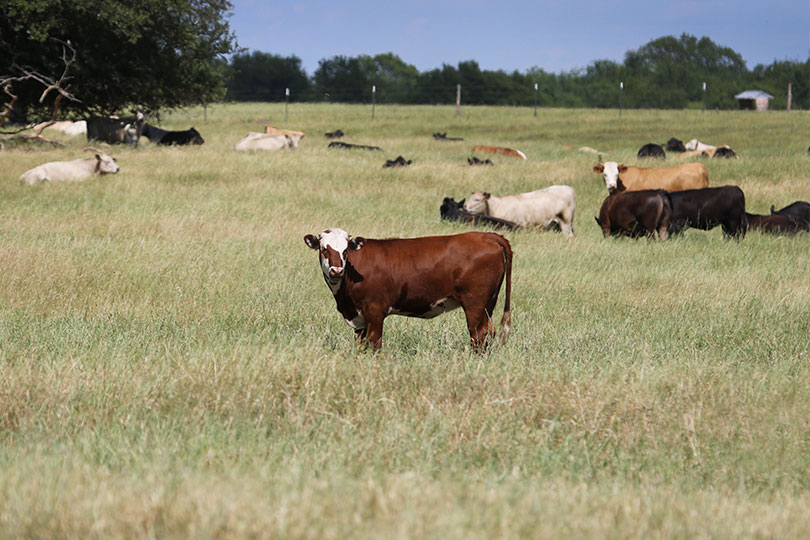By Jennifer Whitlock
Field Editor
Beef cattle markets have been extremely volatile over the past three years, but one Texas A&M AgriLife Extension economist believes the remainder of 2021 and early 2022 will prove steadier.
Processing capacity remains a limiting factor in beef cattle markets, said AgriLife Extension Economist Dr. David Anderson, but the fed cattle market has been slowly improving over the past few months.
“Our ability to slaughter animals and our ability to process those carcasses, turn them into primal cuts, fill boxes and get them out to restaurants and grocery stores…I think we have a real capacity problem,” he said. “Some of that is a labor shortage on the processing side, and that’s holding down better cattle prices, but the constraint is also boosting consumer prices. So, we’re still seeing that in the marketplace with higher prices while dining out or shopping in-store, but we are also seeing some creeping up of cattle prices a bit over the last little while.”
Cheaper corn prices and increased rainfall in Texas led to better profits for many Texas ranchers on fall calves, according to Anderson. Calf prices may still not be what some would consider great, but he pointed out they are higher than last fall and better than the five-year average.
As the national cow herd shrinks slightly due to drought in the West and Midwest, he said prices should continue to climb some into 2022.
“I think for the rest of the year, nationwide, we’re going to have higher prices than we did last year for calves and feeder cattle,” Anderson said. “And as that drought continues to shrink the cow herd, it will really put some pressure on markets when we have fewer cows, so I’m pretty optimistic for next year that we’ll have higher prices overall than this year.”
Another factor he thinks will support better cattle prices for ranchers is the boom in beef exports and slight decrease in imports seen across the U.S. lately.
“Brazil had some problems in exporting to China recently, and Argentina banned exports back in August in an attempt to reduce prices for domestic consumers. So, I think we’ve expanded our exports to fill those gaps from those countries,” he said.
Beef imports were a little lower in early fall.
“Most of what we import are trimmings to make hamburgers, and that’s where most ranchers see the most direct effect of trade imports, particularly in the cull cow market. So, as we import less, domestic prices will be less affected,” he said.
While he believes prices should continue that upward trend, Anderson cautioned supply chain issues can still negatively impact ranchers’ bottom lines. Labor shortages in the transport sector, rapidly increasing fuel prices and a somewhat weak overall economic outlook may work against cattle markets in 2022.
“Our costs are higher, and I think we’re all facing that as consumers ourselves, and it will take some time for that to get worked out,” he said. “Those things hit ranchers just like it hits the rest of us, but I am optimistic as we finally begin to move out of the turmoil of the pandemic.”

